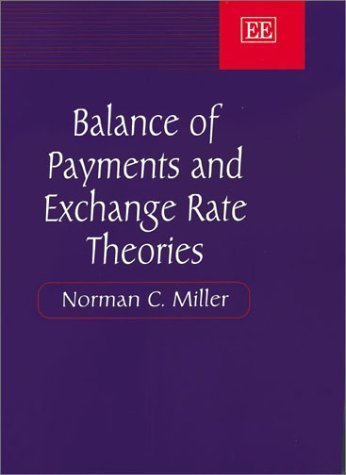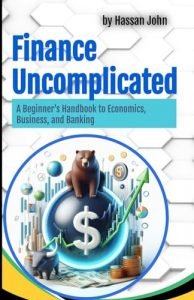1. Balance of Payments and Exchange Rate Theories
Written by the brilliant Norman C. Miller, Balance of Payments and Exchange Rate Theories is a comprehensive exploration of the dynamics between international trade and exchange rate adjustments. Published in 2003, this tome delves into complex theories with such clarity that even the most intricate concepts become comprehensible. It is an indispensable resource for policymakers and economists alike, serving as a solid foundation for understanding the economic frameworks that govern international finance. Anyone looking to enhance their knowledge about economic policies should consider this book a must-have.

2. A Guide to Understanding International Trade and the Balance of Payments
Gail Makinen’s A Guide to Understanding International Trade and the Balance of Payments is truly a treasure for those interested in public policy. At an affordable price point of just $9.99, this book simplifies complex economic concepts, enabling readers to engage intelligently with public policy proposals. It offers practical insights into international trade mechanisms, making it ideal for students and professionals aiming to develop their analytical skills in formulating and evaluating economic strategies. This work is a key addition to the library of anyone passionate about understanding trade economics.

3. Monetary Approaches to the Balance of Payments and Exchange Rates
This classic, authored by Alan A. Rabin and Leland B. Yeager, provides an insightful perspective on monetary approaches to economic scenarios. Monetary Approaches to the Balance of Payments and Exchange Rates is a fundamental contribution to economic literature from 1982 that has maintained its relevance. It explores how monetary conditions impact the balance of payments, a topic that remains critical in today’s global economy. This book will equip you with valuable frameworks for analyzing present-day financial strategies and policy preparations in the context of monetary economics.

4. Trade, the Balance of Payments and Exchange Rate Policy in Developing Countries
A. P. Thirlwall’s Trade, the Balance of Payments and Exchange Rate Policy in Developing Countries is a scholarly introduction to the economic challenges faced by developing economies. This book lays out the need for sustainable exchange rate policies while providing a robust analysis of trade dynamics. Thirlwall’s expertise brings forward critical insights into how these countries can navigate the complexities of international finance, making it an essential read for scholars and practitioners working in development economics.

5. Balance of Payments: Theory and Economic Policy
Balance of Payments: Theory and Economic Policy by Robert Stern is a foundational work that delineates the critical intersection between balance of payments and economic policy formulation. First published in 2007, it is praised for its analytical depth yet remains accessible to readers from various academic backgrounds. It tackles real-world implications of theoretical insights, making it a significant resource for policymakers, economists, and students eager to understand the wider implications of payment balances on policies and regulations globally.

6. Balance of Payments, Exchange Rates, and Competitiveness in Transition Economies
Co-authored by Mario I. Blejer and Marko Skreb, this book dives into the intricate relationship between balance of payments, exchange rates, and national competitiveness, particularly within transition economies. This text is a must-read for those interested in the unique challenges these economies face post-liberalization. This essential analysis not only discusses imbalances but also offers potential solutions for enhancing competitiveness in a transitioning economic environment.

7. The Balance of Payments: Free Versus Fixed Exchange Rates
Pioneer economist Milton Friedman’s The Balance of Payments: Free Versus Fixed Exchange Rates presents an engaging dialogue on the critical debate between fixed and free-floating exchange rate regimes. Published in the 1960s, it remains strikingly relevant, with Friedman’s arguments offering foundational insights for understanding modern currency fluctuations. This thought-provoking book encourages readers to think critically about exchange rate policies and their broader economic impacts, making it an invaluable read for economists, students, and anyone interested in the global economy.

8. Balance of Payments Problems and Exchange Rate Policy: The Ghanaian Experience
Amoaka’s insightful account in Balance of Payments Problems and Exchange Rate Policy: The Ghanaian Experience sheds light on the unique challenges faced by Ghana in balancing its economic policies. This text provides a critical lens on how exchange rate policies influence developing nations, offering valuable lessons that can be applied in similar contexts worldwide. A compelling analysis that is essential for anyone looking to understand the implications of exchange rates on national economies.

9. The Monetary Approach to the Balance of Payments, Exchange Rates, and World Inflation
This work by Thomas M. Humphrey and Robert E. Keleher presents a unique perspective on how monetary policies affect both balance of payments and inflation levels. Their comprehensive approach makes it a central read for those in the finance sector who need to understand the interconnections of international finance mechanisms. The concepts discussed within its pages provide relevant insights into today’s economic climate.

10. Balance of Payments and Exchange Rate Finance (Chinese Edition)
For Chinese-speaking economists and students, Balance of Payments and Exchange Rate Finance provides invaluable insights into international finance problems and solutions framed within the context of Chinese policies. This edition is key for those looking to connect global economic theories with local practices, enhancing understanding of international trade and finance specific to the Chinese market.





































